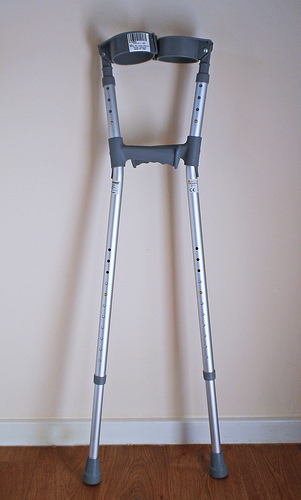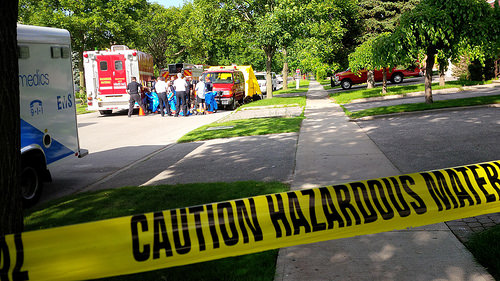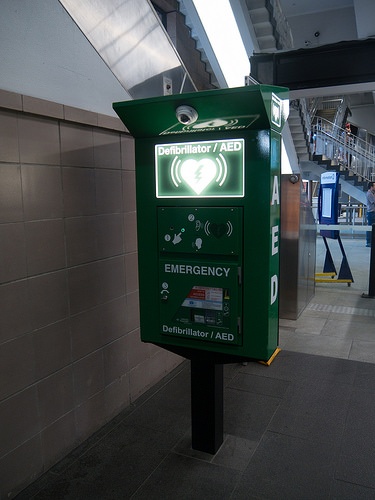Even if the latest polar vortex has ended by the time you read this, employers in most parts of the continent should be worrying about protecting workers against winter weather. Occupational safety and health regulators include “environmental” hazards as those that may require employers to provide their employees with personal protective equipment (PPE), and employers also bear a “general duty” to protect workers against recognized hazards. These requirements cover potential harm from extreme temperatures including cold, as well as slippery surfaces and other hazards from frozen and melting snow or other precipitation.
Read MoreAudit, Compliance and Risk Blog
Tags: Employer Best Practices, Health & Safety, OSHA, Employee Rights, climate change
Is Your Workplace Injury and Illness Log Ready for Compliance with OSHA Requirements?
Posted by Jon Elliott on Thu, Jan 31, 2019
The Occupational Safety and Health Administration (OSHA) requires employers to prepare and maintain records of occupational injuries and illnesses (I&I Logs) as they occur. OSHA also requires employers to post an annual I&I Summary in each “establishment” within their workplace by February 1, summarizing that workplace’s I&Is during the previous calendar year. In states that administer federal standards within state-run programs, employers follow the comparable state requirements. Establishments with 250 or more workers must file electronic summaries by March 2.
Read MoreTags: Business & Legal, Health & Safety, OSHA, Workplace violence
On October 24, the US Chemical Safety and Hazard Investigation Board (which uses the truncated acronym CSB) issued a “Call to Action: Combustible Dust” seeking information about what it has long considered a major industrial hazard. Since 1980 CSB has identified hundreds of industrial accidents involving dust that have injured nearly 1000 workers and killed more than one hundred. In 2006 CSB issued 4 formal recommendations to the Occupational Safety and Health Administration (OSHA) to enhance that agency’s regulation of occupational hazards from combustible dust – particularly from possible fires or explosions, with mixed responses.
Read MoreTags: Employer Best Practices, Health & Safety, OSHA, Environmental risks, Environmental
The Occupational Safety and Health Administration (OSHA) and state worker protection agencies require employers to “guard” moving portions of machines and powered equipment, to prevent entanglements, pinches and amputations. OSHA sets general requirements for machine guarding under its Machine Guarding Standard, plus specific requirements for six different types of equipment in separate standards.
Read MoreTags: Employer Best Practices, Health & Safety, OSHA, Employee Rights
OSHA Provides Planning and Response Advice Addressing Hurricanes
Posted by Jon Elliott on Tue, Sep 25, 2018
Federal agencies have marked the beginning of Atlantic hurricane season by reminding employers and the public of the risks from hurricanes, and how to plan for and respond to events. These include a compilation of advisory documents on the Occupational Safety and Health Administration (OSHA) website, which also includes links to additional information by the Federal Emergency Management Agency (FEMA), Centers for Disease Control and Prevention (CDC), and the National Hurricane Center. This information is too late to help people in the Carolinas who’ve been inundated by Florence, but does provide useful reminders.
Read MoreTags: OSHA, Environmental risks, Environmental, EPA
The Occupational Safety and Health Administration (OSHA) and state worker protection agencies require employers to identify regulated carcinogens in their workplaces, to protect workers against hazardous exposures, and to provide information and training to reinforce those protections. OSHA regulations apply to dozens of chemical agents and other substances known to be human carcinogens, including 13 covered by a single “Regulated Carcinogen Standard.” Employers should also be aware that hundreds of additional chemicals are suspected carcinogens that should be considered.
Read MoreTags: Employer Best Practices, Health & Safety, OSHA, Employee Rights, Environmental risks, Environmental, Hazcom
EPA Proposes to Rescind Last Administration’s Long-Delayed Accidental Release Prevention Revisions
Posted by Jon Elliott on Tue, Jul 17, 2018
In the last week before President Obama left office, the Environmental Protection Agency (EPA) completed a multi-year review of its Accidental Release Prevention (ARP) program for toxic catastrophe prevention, and adopted significant expansions of ARP requirements (I wrote about them here). EPA proposed ARP revisions in March 2016 (I blogged about them here). Then, when President Trump took office, EPA reversed course, repeatedly deferring the effective date of those revisions while the agency reviewed them. In May 2018 EPA completed its review, and published a proposal in the Federal Register to rescind almost all these expansions and return ARP requirement to those in place before 2017. EPA also included an alternative proposal that retained a few more elements, and requested public comment on both versions no later than July 30, 2018.
Read MoreTags: OSHA, Environmental risks, Environmental, EPA, Greenhouse Gas, ghg, Hazcom, effluent, mact
There are no national ergonomics requirements for employers, but California has just expanded its longstanding requirements, to add specific protections for hotel housekeepers. These new requirements complete review and rulemaking triggered in 2012 by a petition by a labor advocacy group, and are consistent with other requirements already administered by the state Division of Occupational Safety and Health (CalOSHA). The state’s efforts are also consistent with general guidance provided US Occupational Safety and Health Administration (OSHA). (OSHA has enforced its General Duty Clause against employers found to have ignored known hazards to their employees, since President Bush signed legislation in 2001 repealing OSHA’s own national ergonomics standard.).
Read MoreTags: Employer Best Practices, Health & Safety, OSHA, Employee Rights
Automated External Defibrillators (AEDs) are appearing in more and more public spaces and workplaces. These electronic devices are designed to deliver an electric shock to a victim of sudden cardiac arrest, and could save thousands of lives every year:
Read MoreTags: Employer Best Practices, Health & Safety, OSHA, Employee Rights, AED
Although Environmental Health and Safety (EH&S) requirements target hundreds of micro-organisms (primarily viruses and bacteria), important hazards remain unregulated. Many await definitive scientific conclusions, but others need testing and control methodologies that would allow requirements to be designed and administered, sufficient regulator and regulated entity resources, and/or high enough political priorities. Until recently, one of these unregulated pathogens has been the legionella bacterium, first identified in 1976 as the cause of “Legionnaire’s disease,” which appears as a form of pneumonia.
Read MoreTags: Health & Safety, OSHA, Environmental risks, Environmental, EPA










